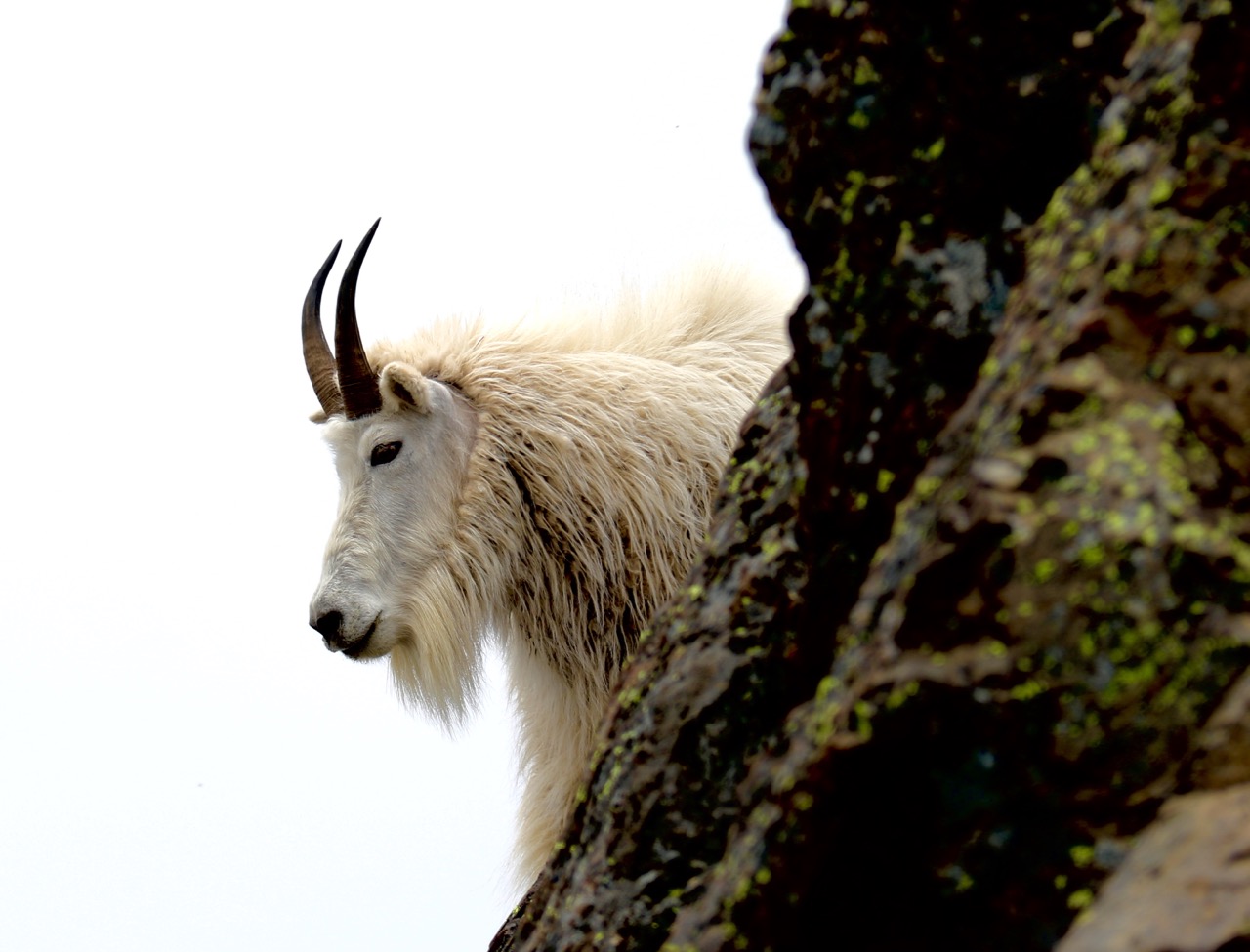I hike Mount Ellinor more than I should. In fact, I am probably addicted. Every four weeks or so, I take the 90 minute drive from Olympia to the upper parking lot. I have the drive, the trail, and the views memorized, yet I keep returning, again and again. On May 18th, 2015, I returned yet again to the summit of this Olympic Peninsula mountain, with hopes of another adventure, stunning views, and hopefully some pictures of Mt St Helens and/or baby goats. It was my sixth time up Ellinor in the last five months, and I feel like I have been ignoring her.
My love for Mount Ellinor is not rare. The trail is extremely popular, receiving 18,000 hikers each year, as estimated by a NFS employee. That number could easily be higher. In September of 2014 alone, approx. 2,000 hikers attempted to reach the majestic summit. Obviously, with so many people on the trails, the mountain can get crowded, as breathtaking destinations tend to do. On sunny, snow-free weekends, it isn’t uncommon to see 250-500 people arriving to the trailheads, hoping for a glimpse of one of Washington State’s most impressive panoramic views. Mount Ellinor is becoming one of the most popular hikes on the Olympic Peninsula, a fact that scares some crotchety old locals away from summiting her glorious flanks. It is their loss though, as the hike, the views and the experiences on Mount Ellinor never get old.
On May 18th, I decided to once again head up to the summit of Mount Ellinor, hoping for a glimpse of Mt St Helens on the 35th anniversary of its eruption. With clouds piling up on the eastern slopes of the Olympic Mountains, that view didn’t happen, which ruined a perfectly good idea for a story. Slightly frustrated, the group of new friends I was with headed to the top anyway, knowing that the Olympic interior and the clouds slamming into Mount Washington would be quite a sight. Just above the bolder field,clouds surrounded me, the wind increased and visibility shot down to two feet.
As I mentioned before, I have this trail memorized, so I wasn’t concerned with walking in the clouds. After a few minutes of leading my group with sauntering across the slide area, I decided it was foolish not to put on my great Outdoor Research jacket that I won’t shut up about. Reaching into my bag, I pulled out my camera first, since it was sitting on the jacket. It was as if the camera was in charge of the weather. The second I pulled it all the way out, the wind stopped and visibility increased to a few hundred feet. I debated putting it back in the bag to see if the wind would return, but my eyes saw something walking a few hundred feet above me. Up near the saddle that offers the first views of the southern Olympic Mountains, a mountain goat was standing directly on the trail. My group waited until the goat was well off the trail before we started back up. I reassured everyone it would be ok, with rock in hand.
Hiking to the summit,we saw five more goats right on or near the trail, with a handful of others spread around toward the winter trail. This prompted me to write a post about goat safety to serve as a reminder to everyone hiking near wildlife. These rules should apply to ALL mountain goats, and not just the ones in the Olympic Mountains. Hikers in the cascades, I am looking at you.
MOUNTAIN GOAT RULES!

Be Alert
While hiking, and generally in life, you should always be looking and listening for animals, people and anything else. It is a dad thing to say, but an alert hiker is a safe hiker. Mountain goats can come around a corner quickly and without much warning, so the more alert you are, the better. Make noise and proceed around blind corners with caution.

Pee at Least 50 Feet Off the Trail (But 50 Yards is best)
Goats and pee is somewhat of a nasty combination, but the goats are actually extremely smart. Mountain goats crave salt and will lick anything that has a high salt content, including human urine. Knowing where humans are and that typically they will urinate on or near a trail, they will frequent that area because it is a dependable place to get salt. If you have to urinate while hiking, it is smart to do so at least 50 feet off of the trail, but you should try to get 50 yards off trail. I know this seems like a pain, but having to hike between 50 and 150 feet off a trail is better than peeing on a trail and dying from a goat attack because of your laziness.

Stay 50 Yards away from goats at all times
This rule is most often broken. Goats are cute and cuddly looking, but can, and often are dangerous, aggressive creatures. They need to be treated with respect and caution at all times in all locations. You are not a goat whisperer and even if you are, it is probably for domestic goats. You can’t know what a goat is thinking, so don’t be an idiot- stay away from them. If you remain 50 yards (150 feet!) away, you will be safe from an attack. If they start approaching you, leave, do not think they are coming toward you because they want to be friends. I know this reads like I am writing to complete morons, but you would be surprised what you see on trails…

The Goats Own the Trails
Animals own the trails, not you. If a goat is on a trail, stop 50 yards away and wait for them to leave the trail. If they don’t leave the trail, you might have to turn around and head back to where you came from. This might not be ideal, but again, being cautious will keep you and the goat alive for a long time. Do not sit close to the animals and think that just because they are lying down that they are safe. Far too often people will approach animals lying down to get a picture and end up getting chased. If you can’t get a good picture with your camera, go home and buy a better one. Do not get closer to the animal!

Do Not Feed the Goats
No wild animal should be fed by humans, unless they are a wildlife expert. This includes deer in your yard, birds and chipmunks on a trail or goats along a rocky summit. Not only can your food cause serious digestive and health problems, but it also gets the animals dependent on people for nourishment, causing them to get closer and closer to hikers. If you do eat on a trail, pick up every single crumb. Do not leave orange and banana peels, apple cores or anything else that is not 100% natural to the area. Don’t be stubborn, leave NO trace.

If a Goat Approaches You
Despite the majority of us following these extremely simple rules, mountain goats will more than likely push these limits, especially on Mount Ellinor. If a mountain goat is moving toward you, yell and scream at it while waving your arms. If you need to, throw rocks at it as hard as you can. It sounds bad to animal lovers, but whether the goat looks aggressive or not, they need to develop fear for humans or they will attack someone else and have to be killed. Why ruin a good thing. Be safe, follow these rules and enjoy nature!
Note: All images taken on 5/18/2015. A good lens and camera was used to take each of these pictures



